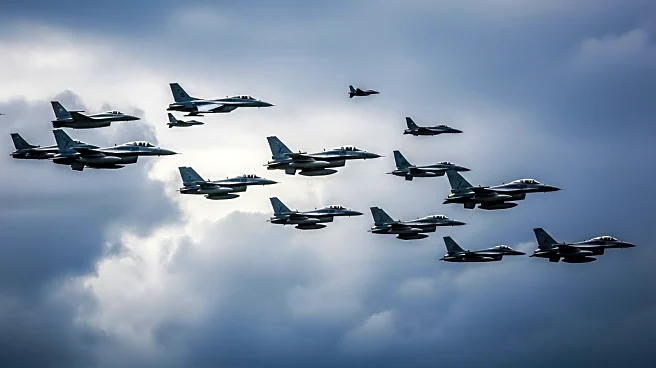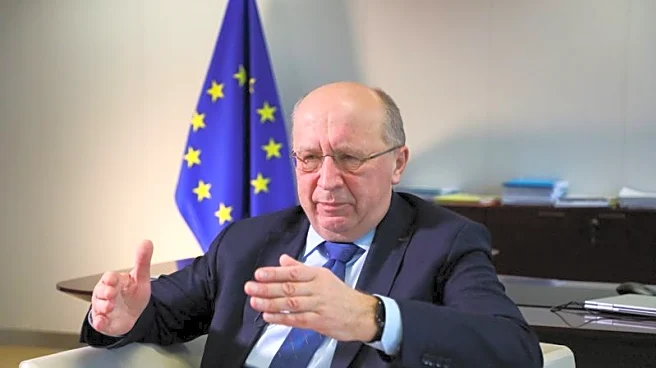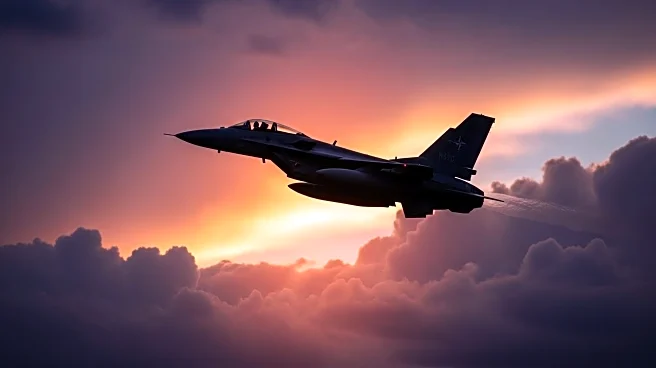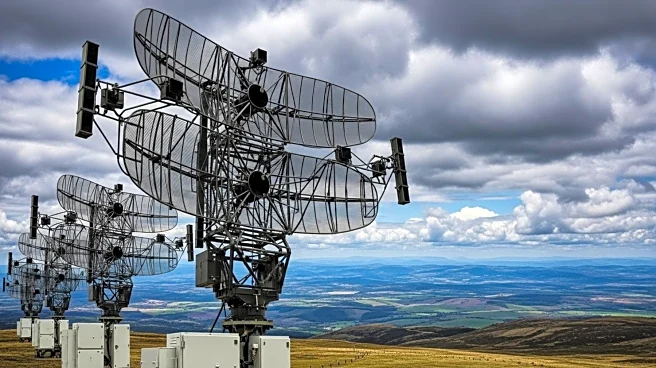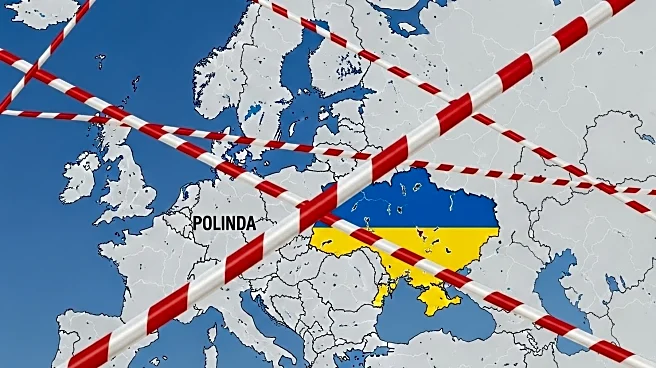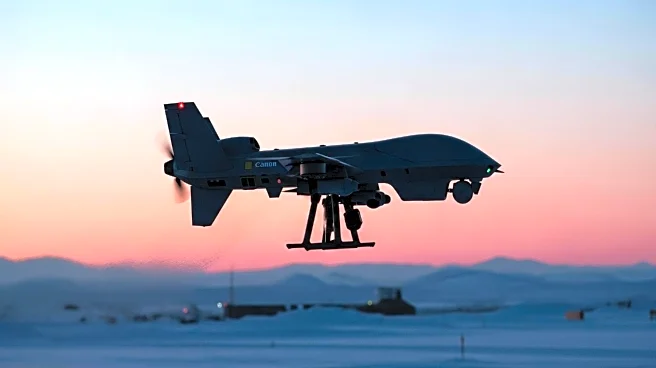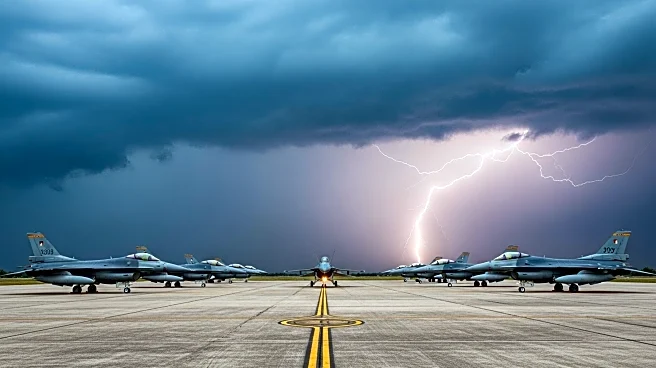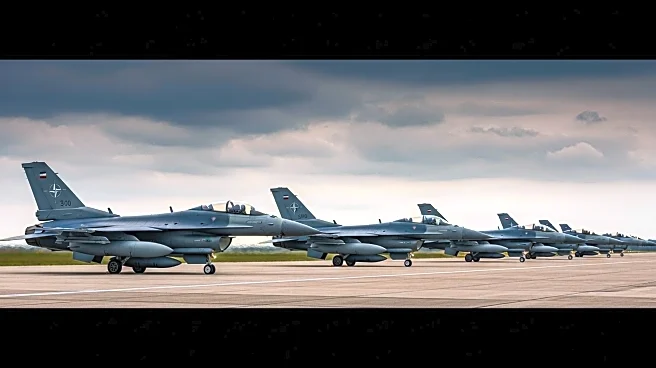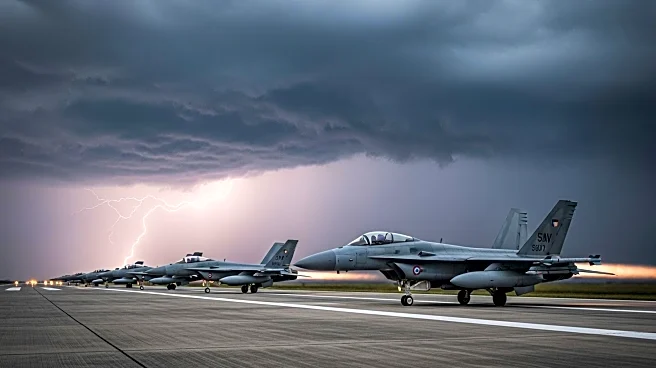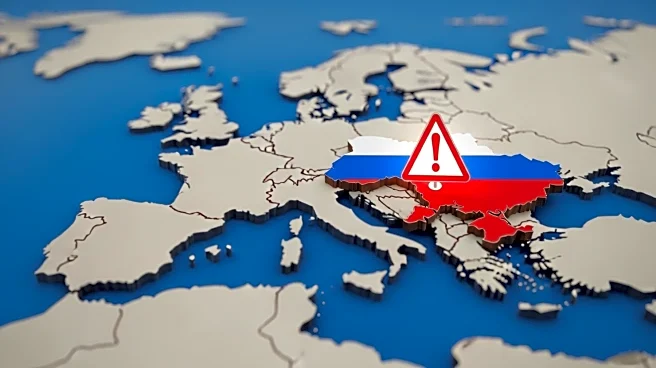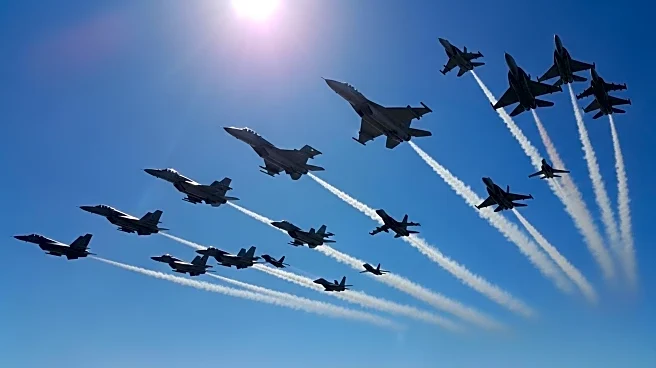What is the story about?
What's Happening?
On Sunday, Russia launched a significant aerial assault on Ukraine, deploying nearly 600 drones and 48 missiles over a 12-hour period. The attack primarily targeted Kyiv, resulting in at least four fatalities and numerous injuries. In response, NATO scrambled fighter jets and heightened air defense alert levels, particularly in Poland, to protect the alliance's eastern flank. The incident underscores the escalating conflict and raises concerns about regional stability and the effectiveness of current air defense systems.
Why It's Important?
The scale of the attack and its proximity to NATO borders have heightened concerns about potential regional instability. This development underscores the increasing threats to NATO member states and the need for enhanced security measures. The incident follows recent airspace violations and drone incursions, further straining relations between NATO allies and Russia. The deployment of fighter jets and temporary airspace restrictions are becoming more frequent as NATO nations report increased airspace violations.
What's Next?
NATO may increase air patrols, conduct training exercises, or reposition assets to demonstrate readiness and deter further provocations. The alliance's response will likely focus on strengthening air defense systems and ensuring regional security. Continued monitoring of airspace violations and drone activity will be crucial in assessing the threat level and determining appropriate countermeasures.
Beyond the Headlines
The attack highlights the broader geopolitical tensions between NATO and Russia, with implications for regional security and international relations. The incident may prompt discussions on the effectiveness of current defense strategies and the need for technological advancements in air defense systems.
AI Generated Content
Do you find this article useful?
